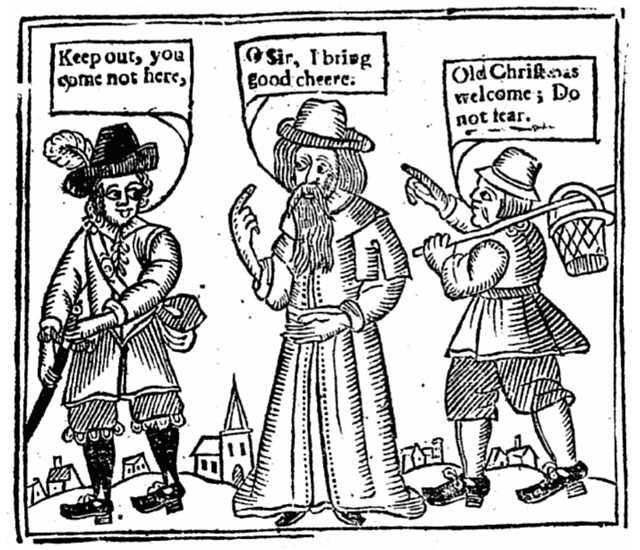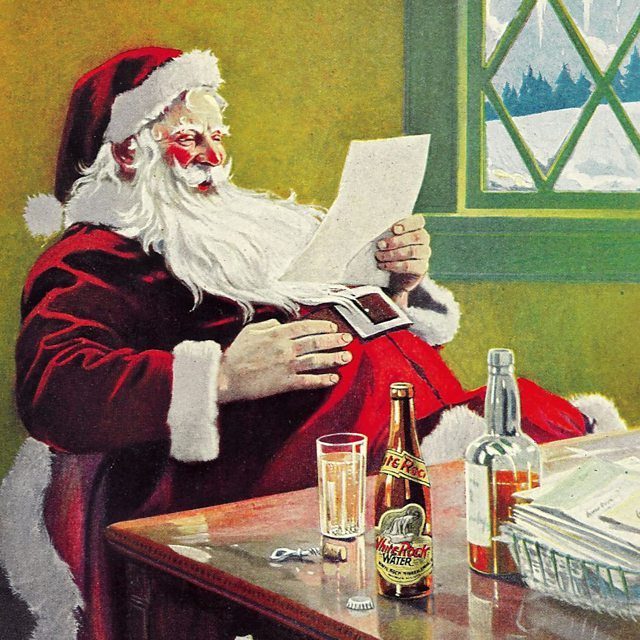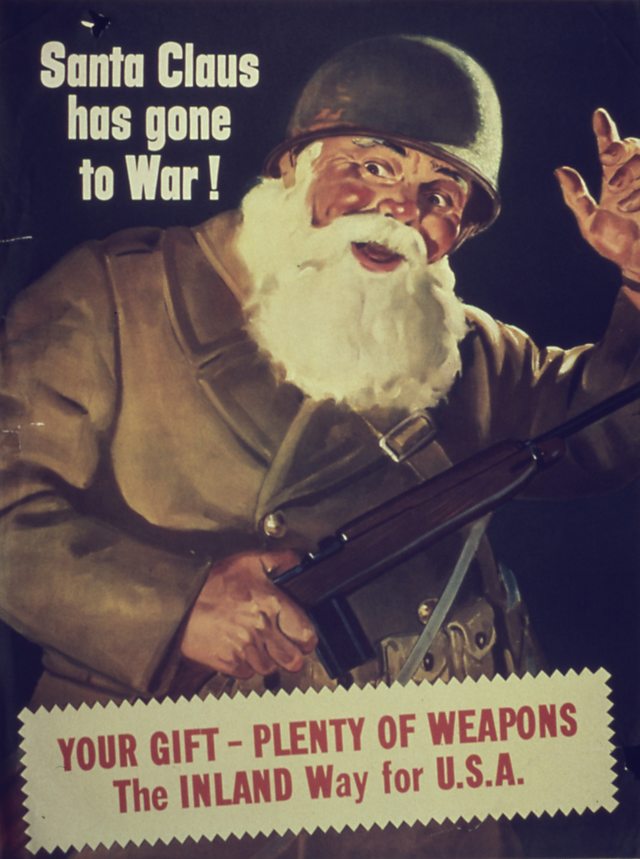Saint Nicholas’ style

St. Nicholas “Lipensky” by Aleksa Petrov | Image: Wikimedia
One of Santa's main stylistic forefathers is Saint Nicholas. In this image, dating from 1294, he is seen sporting a white beard and his clothing is, at least in part, red.
Nicholas, who hailed from Lycia in what is now Turkey, became associated with children and giftgiving as result of two different stories.
The more widely known is that Nicholas saved three girls from being forced into prostitution by giving their indebted father three bags of gold.
The lesser known story, according to historian Gerry Bowler, who has written a whole book devoted to Santa, is that Nicholas pickled the bodies of three boys who had been murdered, resurrecting them. This scene is pictured in paintings such as the Three Legends of Saint Nicholas by Gerard David.
While Nicholas was a popular figure during the Middle Ages, after the Reformation he was largely forgotten in much of northern Europe. This presented a problem for parents, according to Bowler.
He said: "That was problematic. You still love your kids, but now who is going to bring them the gifts?" In some cases, Bowler says, that role fell to baby Jesus.
Puritanical look

Frontispiece to John Taylor’s pamphlet The Vindication of Christmas, 1652 (printed date 1653)
It wasn't just Saint Nicholas who was made to feel unwelcome. Father Christmas - the traditional English personification of the festival - also got the cold shoulder at times.
In this pamphlet from 1652, Father Christmas sports a brimmed hat and long robe. When he offers a greeting of, "O Sir, I bring good cheere", a soldier warns him, "Keep out, you come not here." A passerby, on the other hand, seems more welcoming, responding with, "Old Christmas welcome; Do not fear."
During the reign of Oliver Cromwell, measures were put in place to limit and discourage the celebration of Christmas, including dispatching City of London soldiers to patrol the streets, seizing any food they discovered being prepared for Christmas celebrations.
Green garb

The Ghost of Christmas Present by John Leech I Image: Wikimedia
In Charles Dickens' 1843 book A Christmas Carol, the Ghost of Christmas Present shows Scrooge a number of scenes of the world on Christmas Day, including the homes of Bob Cratchit and Scrooge's nephew, Fred.
The Ghost of Christmas Present orders Scrooge to look at him and Dickens then gives the following description.
"It was clothed in one simple green robe, or mantle, bordered with white fur. This garment hung so loosely on the figure, that its capacious breast was bare, as if disdaining to be warded or concealed by any artifice. Its feet, observable beneath the ample folds of the garment, were also bare; and on its head it wore no other covering than a holly wreath, set here and there with shining icicles. Its dark brown curls were long and free; free as its genial face, its sparkling eye, its open hand, its cheery voice, its unconstrained demeanour, and its joyful air."
The Ghost of Christmas Present is believed by some to be one the sources from which the image of modern Santa is derived.
Our Christmas traditions owe much to Dickens, particularly the concept of a white Christmas. That had a root in the reality though. In his biography of Dickens, Peter Ackroyd noted that during the first eight years of the authors life, there was a white Christmas every year.
Red re-emergence

Merry Old Santa Claus by Thomas Nast, 1863 | Image: Wikimedia
According to the New York Times, while other artists of the period sketched Santa Claus, Thomas Nast stands apart from the rest for his role in creating and popularizing the modern image of the Christmas figure.
Nast was instrumental in standardizing and nationalizing the image of a jolly, kind, and portly Santa in a red, fur-trimmed suit delivering toys
They wrote: "He contributed 33 Christmas drawings to Harper's Weekly from 1863 through 1886, and Santa is seen or referenced in all but one. Nast was instrumental in standardizing and nationalizing the image of a jolly, kind, and portly Santa in a red, fur-trimmed suit delivering toys from his North Pole workshop."
Taste of Christmas?

Santa and White Rock made their Life Magazine debut in 1923
There's an idea that circulates from time to time about Coca-Cola being responsible for creating the classic image of Santa.
In 1931 the company commissioned an illustrator, Haddon Sundblom, to create images featuring Santa Claus. Even the company themselves admit it's a myth that their packaging branding bed red and white is the reason Santa looks like this.
They weren't the first soft drink company to feature the classic red-suited, white bearded Santa.
Ginger Ale manufacturer White Rock began advertising with Santa Claus in 1915 and by 1923 he was appearing with the now classic look – red suit with white trim and matching hat, accessorised with with black belt.
Santa at war

Image: National Archives and Records Administration
During World War Two even Santa was called up for military service.
In this image produced by the US War Production Board, Santa has abandoned his red suit and hat for an Army uniform and helmet.
But even when he was wearing his more traditional red garb, Santa remained a visible part of the war effort.
In one particular poster, Hitler, Tojo and Mussolini are all warned by Santa that he'll be delivering weapons including tanks and plane to the US military.
And US President Franklin Roosevelt was such a big fan of Santa that "Bona fide Santa Clauses” were excluded from a 1942 wage-freezing order.
The idea of Santa fighting the good fight during World War Two persists even in the contemporary imagination, with the North Pole superstar featuring in the graphic novel Santa Claus vs. The Nazis.
Santa also cropped up during World War One. Chris Kempshall has written about how the image of Santa was used to encourage the public to buy gifts like tobacco for soldiers who were far from home at Christmas.
He wrote: "For those left at home they were also reminded and encouraged to send Christmas to the front in some way shape or form so as to ensure their loved ones that they (and their country) had not forgotten them.
BBC Arts
More about: Santa
















































